Impresión 3D para luchar contra el COVID-19
Ante la actual situación de emergencia que se está viviendo por la propagación del COVID-19 coronavirus, desde la solidaridad y la innovación están surgiendo grandes iniciativas y soluciones, especialmente para paliar la escasez de material médico y de protección individual (EPI).
De la impresión 3D En el sector, son muchos los ingenieros y fabricantes de materiales que, junto a médicos especialistas, trabajan para diseñar modelos de EPI (equipos de protección individual) que ayuden a preservar la salud de los sanitarios y faciliten su trabajo, así como en el desarrollo de diferentes prototipos como válvulas, conectores de respiradores o respiradores asistidos y otros dispositivos que ayudan a mitigar la escasez de equipos médicos.
Además, muchas comunidades de creadores han lanzado sus impresoras 3D para fabricar estos dispositivos. En España ha surgido la iniciativa Coronavirus Makers, una plataforma sin ánimo de lucro con miles de voluntarios. Iniciativas similares se pueden encontrar en países como Alemania, Italia, Chile, Argentina o Colombia.
A continuación recopilamos varios diseños de equipos de protección y material médico que han sido puestos a disposición del público de forma gratuita por diferentes empresas y asociaciones, y que pueden descargarse en formato STL e imprimirse en prácticamente cualquier impresora FDM.
Hay que tener en cuenta que algunos de los modelos no están homologados ni aprobados por las autoridades sanitarias correspondientes y que, dependiendo de cada zona o país, los requisitos de fabricación para conseguir esta homologación pueden variar.
Mascarillas
Tanto en plataformas de recursos de impresión 3D como en varias páginas de empresas del sector 3D se están compartiendo diferentes modelos de mascarillas para impresión 3D en cualquier tipo de impresora 3D FDM.
Cabe destacar que estas mascarillas , salvo que cuenten con los filtros necesarios, solo sirven como barrera física contra el virus , además de ayudar a no propagarlo en caso de estar infectado.
Hace unos días compartimos el diseño de la máscara Nanohack desarrollada por el Copper3D equipo y que recientemente compartió la actualización del diseño de dicha mascarilla:NanoHack 2.0, con una estructura monobloque, fuerte y hermética , que debe estar fabricado con filamentos antibacterianos PLActive y MDFlex para proporcionar la máxima protección contra el ambiente externo.
PLActive es un polímero reciclable y biocompatible que contiene un nanocompuesto de cobre que ha demostrado propiedades antimicrobianas.
Gracias a su diseño, NanoHack 2.0 es un dispositivo que ofrece protección contra partículas en el aire y evita la propagación de líquidos que contaminan las vías respiratorias. NanoHack utiliza el mismo material que se utiliza en las mascarillas quirúrgicas (polipropileno no tejido) como sistema de filtración. Para una protección óptima, se recomienda utilizar un filtro de polipropileno no tejido de triple capa. Este filtro está incrustado en la máscara. Así, según diversos estudios, se consigue una eficacia de filtración del 96,4 % para microorganismos de 1 micra y del 89,5 % para microorganismos de 0,02 micras.
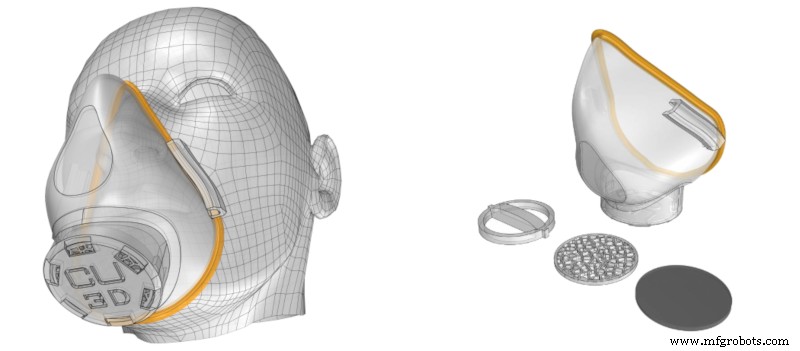
Más información
Descargar STL
Protectores faciales
Podrás encontrar infinidad de modelos de visores y pantallas faciales En Internet. Prusa ha desarrollado varios prototipos, que han sido verificados con el Ministerio de Salud checo. Por último, han presentado dos versiones de pantalla:RC1 y RC2.
 This screen design consists of a rigid structure with a flexible and transparent acetate plastic sheet. The rigid structure is 3D printed and the plastic acetate sheet is then adapted as a screen. The RC1 version allows more parts to be printed in the same printing process, while the RC2 version provides slightly higher protection and is more comfortable to wear.
This screen design consists of a rigid structure with a flexible and transparent acetate plastic sheet. The rigid structure is 3D printed and the plastic acetate sheet is then adapted as a screen. The RC1 version allows more parts to be printed in the same printing process, while the RC2 version provides slightly higher protection and is more comfortable to wear.
As a screen, the prototype uses a 0.5mm thick PETG sheet, although other transparent and flexible materials with a similar thickness can be used such as clear acetate sheets.
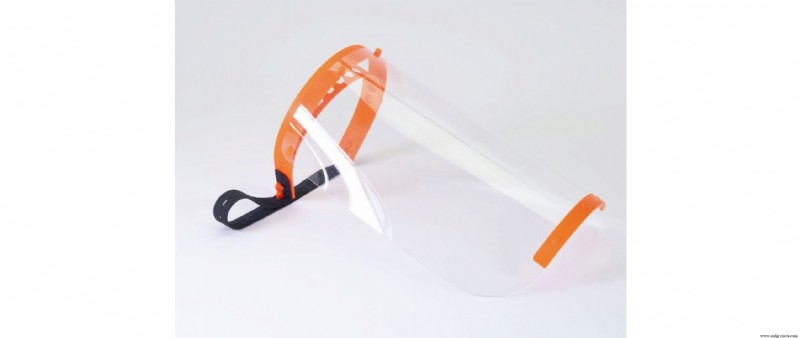
More info
Download STL from Prusa
3D printing with PETG with 30 % fill is recommended, although other materials such as PLA or ABS can be used. In order to deliver them to health centers, it's essential to sterilize them by applying a water bath with bleach (Ratio 50:1) and then rinse them with water. In this way, they will not carry the risk of possible indirect transmissions for healthcare personnel.
Respirators and valves
Given the shortage of self-contained respirators, several groups of engineers, in collaboration with different institutions and healthcare personnel, are developing prototypes and manufacturing the different parts that compose them using 3D printing.
This is the case of the Barcelona Free Trade Zone Consortium that, together with HP, Leitat, and SEAT, have developed a prototype of a respirator using 3D printing to manufacture its parts and taking advantage of elements such as a car's windshield wiper motor. This device has been named OxyGEN and has already been validated by experts from the Parc Taulí hospital in Sabadell. One of the advantages of this device is that its production is scalable.
Another possible solution that arises is to use adapters that allow the same respirator to be used for several patients, such as the “H” connector that Copper3D has developed. A design that minimizes dead space volume and prevents possible air leakage due to unnecessary connections. Copper 3D recommends 3D printing of this device using PLActive, for its antibacterial properties and biocompatibility.
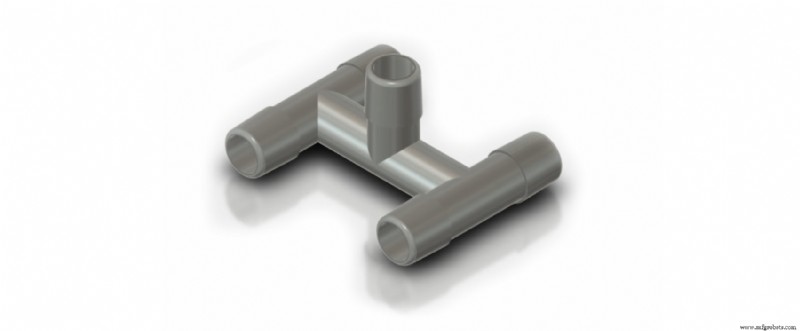
Más información
Download STL
In several hospitals there is a lack of some important elements related to respirators and necessary when treating a patient with respiratory complications. This is the case of the Venturi valve , used to regulate the oxygen concentration that is introduced to the patient through the respirator.
There are several designs available to users, such as this one from the Cults platform.
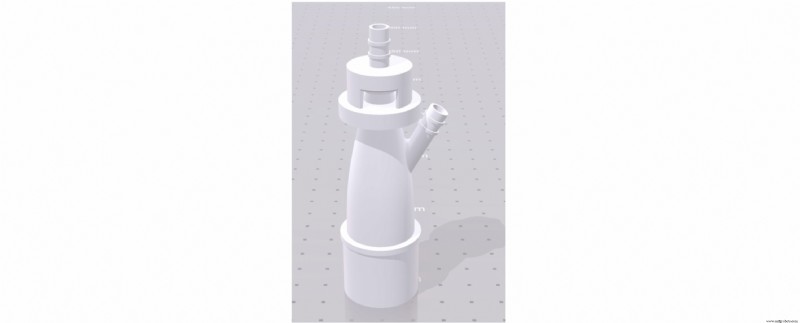
Download STL from Cults
Other devices
In addition to PPE and specific devices for the treatment of patients affected by COVID-19, different tools are being developed to avoid the contagion by indirect contact to which anyone is exposed in their daily activity (door and window handles, buttons for elevators, etc.).
The StopCovid-19 ring is an easy to print ring, designed to press switches and buttons without physically touching them.
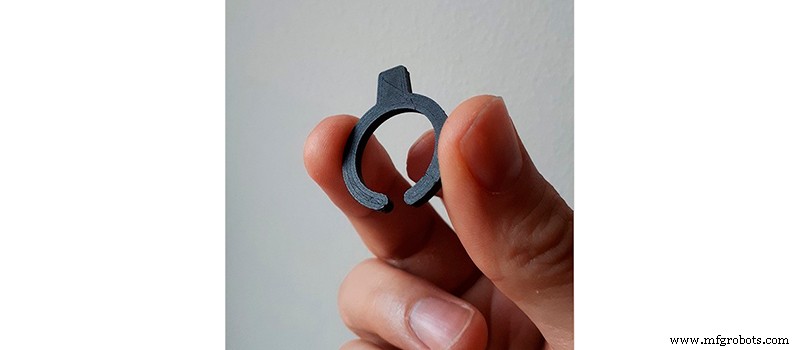
Download STL from Cults
Companies like Materialise have developed a device for attaching to door handles, so that they can be opened without using your hands. Different versions of this tool, adapted to different handle formats (cylindrical, rectangular, circular, etc.) can be downloaded free of charge from its website.

Download STL from Materialise
Combining the usefulness of the previous two, there is LU-Touch :A tool for opening and closing doors and windows, and at the same time a push-button for buttons and switches. LU-Touch can be downloaded for free and printed on any 3D FDM printer. In addition, if you do not have a 3D printer, it can be purchased already printed.
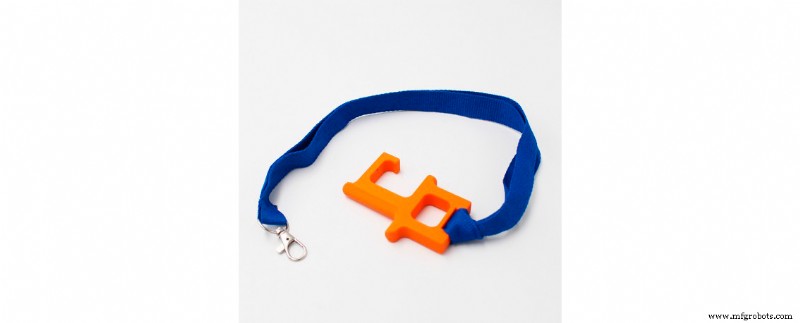
Download STL from Thingiverse
Thanks to the use of these tools, it's possible to minimize the possibility of contagion due to indirect contacts in daily activity. For greater safety, it's necessary to disinfect the tools always after use. It should also be remembered that the use of this type of tool does not exempt from applying the recommended safety rules:wash your hands regularly, do not touch your face, etc.
Specific materials
Among the specific materials to manufacture personal protective equipment, we highlight PLActive and MDFlex for their antimicrobial and antiviral qualities. This material is also recommended for printing expansion devices and valves adapted to self-contained respirators.
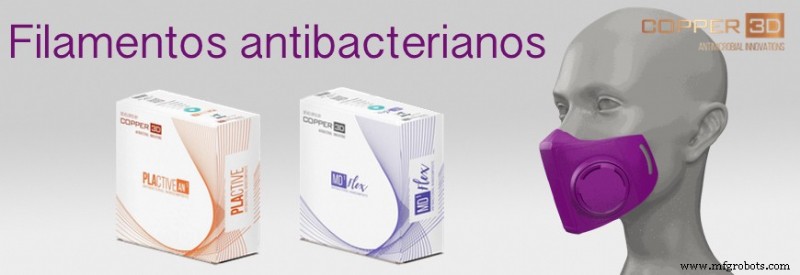
Common materials
For the manufacture of screens or valves that, due to their use, do not need to be composed of biocompatible or antibacterial materials, basic materials can be used in 3D FDM printing, such as PLA or PETG; since these elements do not require specific properties, although it's true that they require some rigidity and it's not recommended to use flexible materials such as Flexfill or FilaFlex.
With these free download files, any user with a FDM 3D printer and any of the aforementioned materials can contribute their bit to help stop the pandemic and the alarming situation we are currently experiencing.
Impresión 3d
- Los 3 pasos básicos de la impresión 3D
- 6 formas de reducir el costo de la impresión 3D
- 4 cosas que la crisis del COVID-19 nos dice sobre la impresión 3D
- El papel del anidamiento en la impresión 3D de polímeros
- Rápido y confiable:Soluciones MedTech en medio de la pandemia de COVID-19
- Impresión del fusible 1 con el fusible 1
- Descubriendo el pasado con la impresión 3D
- Impresión 3D en el mundo en desarrollo
- COVID-19 ha impulsado la impresión 3D en el centro de atención
- El futuro de la impresión 3D en la fabricación
- ¿Es la impresión 3D el futuro de la fabricación?



